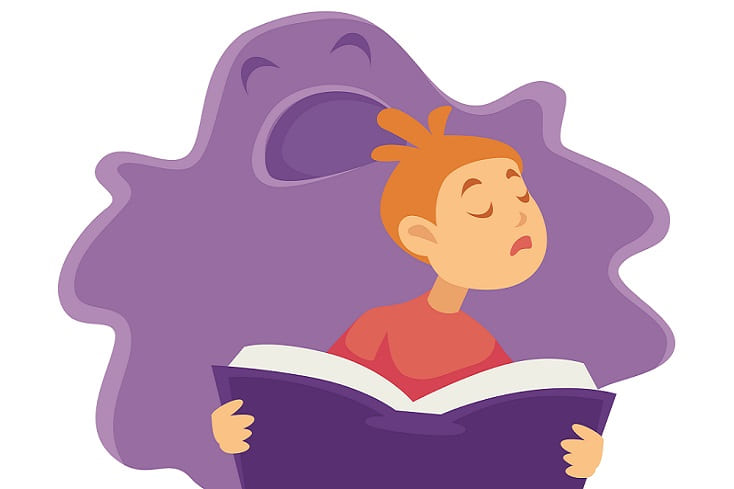May 22, 2020
By Jennifer Watkins

Early on in elementary school, my daughter started showing signs of what I thought was normal childhood anxiety. If you can envision dropping your child off at school only to have to go through the motions three or four times to get them out of the car — that was our reality.
I could never go anywhere by myself because of Maggie’s tremendous fear that something bad would happen to me. Then there were the breakdowns she would have anticipating tests she could pass with flying colors but had to study for repeatedly.
Maggie’s obsessions became more frequent and progressed to the point that we decided to homeschool her at the beginning of 6th grade. She also began regular therapy sessions. I remember her counselor telling me that Maggie was experiencing OCD.
Upon first hearing this diagnosis, the first thing that popped into mind was that she got this from me. I had OCD as a young adult, but never to the degree Maggie experienced. In a way, it was reassuring to know exactly what we were facing, that this wasn’t a child acting out. As a mother, you want to make things to be “all better” for your child, but when it’s something that is beyond a person’s control, it feels like a battle that I couldn’t figure out how to win. At times it was very scary because I could see Maggie’s lack of control turning into depression.
Among Maggie’s compulsions, she would constantly say “I love you” to me after everything we said to each other. She did this just in case I were to die. It comforted her to know that would be the last thing she said to me. She would also constantly apologize. Many times she would say, “I’m sorry…Is it okay? Are we good?” She would do this for no reason. She just needed to know that everything was alright.
One day during her schooling, I asked her to draw a picture of her OCD. A short while later there was a colorful “monster” who she named Otis Chung Daniel staring back at me. This is how we started referring to Maggie’s OCD. Maggie would say, “Otis is really bothering me today.” Or I would say, “I’m not talking to Otis anymore right now.” Giving it a name made it a lot easier to talk about with her.
Otis helped Maggie realize that she had an identity separate from OCD — that her disorder did not define her. We shared Otis with Maggie’s therapist, and she told us that this type of strategy is a therapeutic way for people to deal with the disorder. It is called externalization. In time, when she would have irrational thoughts, Maggie would tell herself, “That’s just Otis. That’s not real.”
Maggie and I both thought that if talking about OCD in this way helped her, then maybe it would help others, too. So, we decided to share our story in a children’s book, Maggie’s Friend Otis. The book was easy to write because it was literally a story from our own lives.
Maggie wanted to share her story. Once she told me, “this feels surreal to actually be writing this book, but Otis makes me feel unique.” In other words, Maggie owns her OCD. It is part of who she is and what makes her special. She was also excited to put into words what someone with this disorder experiences so she could help others understand. After reading this book, people who know Maggie have commented that they had no idea what she was going through.
The book shows a day with Maggie and Otis. Otis is constantly telling Maggie to obsess over certain things and then encourages her to complete the compulsions. However, Maggie realizes that even when she is unable to complete a compulsion, her terrible worries don’t actually come true. In turn, Otis comes to this realization, too. By the end of the book, which is the end of the day, Otis has calmed enough to fall asleep, and no longer tries to persuade Maggie that night.
Although I knew that Maggie’s thoughts and obsessions weren’t “real,” I knew that they were real to her. Does she still have OCD? Yes. Does she let it control her life? Not anymore. Maggie still very much has OCD. It doesn’t just disappear, but there are ways of coping.
Maggie copes by staying busy and keeping her mind occupied. Sometimes, she simply tries to suppress her thoughts and compulsions. Other times, she thinks of Otis and imagines him being asleep. It helps remind her of what is really going on in her mind.
Everyone might have their own Otis in some form, but he is just a little “monster” that needs some help quieting down. Hopefully, eventually, it will become easier and easier to tell Otis, goodnight.
My name is Jennifer Watkins. Maggie is a 16-year-old junior in high school. She is still homeschooled but has branched out into driving, dancing and hanging out with her friends. Jennifer and Maggie presented their book at conferences and hope to continue sharing the book with others. The book is available at maggieandfriend.com.
We’re always accepting submissions to the NAMI Blog! We feature the latest research, stories of recovery, ways to end stigma and strategies for living well with mental illness. Most importantly: We feature your voices.
LEARN MORENAMI HelpLine is available M-F, 10 a.m. – 10 p.m. ET. Call 800-950-6264,
text “helpline” to 62640, or chat online. In a crisis, call or text 988 (24/7).